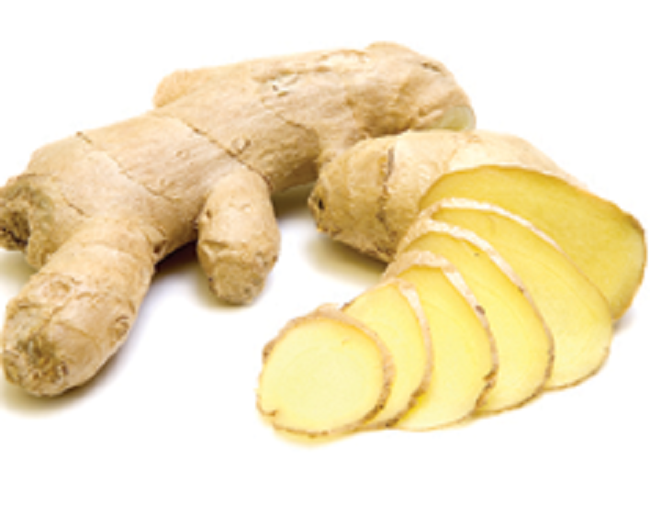TOOTH caries is a problem that affects both adults and children and is even one of the most common health problems in childhood. The importance of fluoride compounds in preventing dental caries has been proven and emphasized in the light of many studies.
The reduction in the incidence of caries in developed countries has been associated with tooth brushing habits and the fluoride content of toothpaste. While the use of fluoride has anti-erosive and remineralizing effects, it also comes at a cost that may be with adverse effects, such as fluorosis—a condition caused by fluoride intake in excessive amounts leading to hypo-mineralization of enamel.
Alternative non-fluoride toothpaste contains herbal products or enzymes with antiseptic and antimicrobial effects instead, to protect teeth against caries and opportunistic microorganisms in the oral cavity.
Recently, much attention has been given to natural products for their health benefits. Now, in a new study, researchers said that ginger, natural honey and bitter chocolate are three novel agents that have promising remineralizing potential and therefore can be included in toothpaste as an active agent for remineralization such as an alternative to fluoride.
According to the researchers, ginger, natural honey, and dark chocolate may have some properties comparable to those of fluoridated toothpaste and MI Paste when used as a remineralizing agent, with their remineralization enhancing potential.
A total of 68 human molar teeth were enrolled in the study to compare the remineralization potential of the main ingredients used as active contents in toothpaste with fluoride and non-fluoride toothpaste. It was in the 2021 edition of the Nigerian Journal of Clinical Practice.
In this study after the samples were treated with demineralization and remineralization solutions in repetitive cycles for 7 days, enamel specimens were then investigated for any mineral changes after the application of ginger extract, natural honey, bitter chocolate and other commercially available toothpaste.
Fluoride is the most potent and effective substance used as an active ingredient yet developed for the prevention and treatment of caries. Fluoride at optimal levels decreases the incidence of dental caries but at the same time at higher levels, it can cause adverse effects like dental or skeletal fluorosis.
The main function of toothpaste is its therapeutic effect in preventing tooth decay and providing dental hygiene. What makes the tooth brushing experience pleasant and supports people to solidify this habit is the taste, fragrance, post-brushing sensation, and foaming characteristics of toothpaste.
According to the researchers, when the groups are examined separately, it was observed that all groups, including the control group, showed various degrees of remineralization.
It is considered that the amount of fluoride (NaF) in the remineralization (0.05 μg F/mL) and demineralization (0.04 μg F/mL); solutions were effective in the remineralization observed in the control group.
When the commercially available remineralization agents MI Paste, Paradontax, and Pronamel were compared with each other, it was observed that the remineralization in the MI Paste group was the lowest. Subsequently, the lowest remineralization was observed in the Pronamel group (18.35%).
Although significantly greater remineralization was observed for Pronamel (Sensodyne®) in situ studies, polyvinyl methyl ether-maleic acid (PVM/MA) copolymer, sodium lactate at low pH may be the reason for the outcomes of our study.
Since the anti-caries and anti-erosive effect of Pronamel occurs at low pH, it is thought that the fluorine release is lower compared to other groups.
In addition, among the non-fluoride agents, the ginger-honey-chocolate group was the group that showed the highest surface hardening in both SMH (36,32%) and FluoreCam measurements (48,75%).
Similarly, it has been shown that a ginger and honey mixture has an anti-caries significant synergistic effect of antimicrobial activity in preventing caries.
The study also reveals enhanced remineralization and there was no significant difference between the bitter chocolate group and fluoride toothpaste in terms of surface hardness and mineral loss/gain.
According to the results of our study, the same synergistic effect may be valid in terms of surface remineralization.
Previously, two studies conducted with a herbal mixture of chocolate, ginger and honey showed the mixture had a positive impact on the remineralization of early enamel lesions. In both in vitro- and in situ-controlled studies, it was observed that when the alternative materials were used, an increase in enamel lesion hardness of 50-80 microns was observed compared with the regular fluoride toothpaste used in that study.
In another study, it was determined that a larger enamel lesion of 140 microns could be remineralized with ginger and honey-containing herbal toothpaste.
The first study hypothesised that ginger alone was an effective agent in the remineralization of the initial enamel caries lesion. Then, the second study aimed to evaluate the remineralization potential of ginger, chocolate, and a honey mixture of these three substances on human-softened enamel surfaces.
In terms of caries prevention, natural honey had shown no erosion on the enamel surface in the Scanning electron microscope (SEM).
Bitter chocolate was another potential active ingredient due to its content “theobromine”. Many studies showed its remineralizing effect on the tooth surface and its anti-caries properties. It has been suggested that theobromine found in chocolate is better on tooth enamel remineralization than fluoride.






